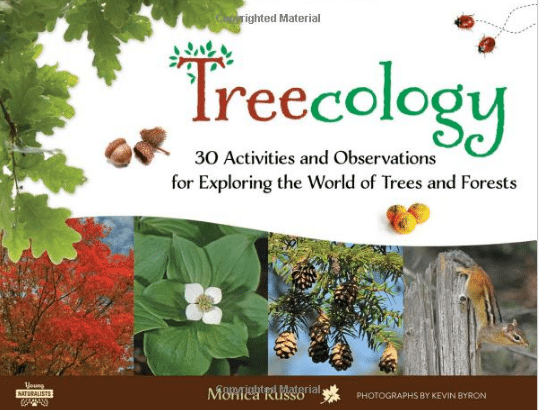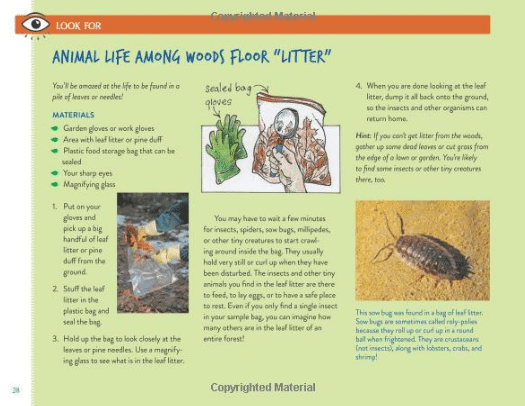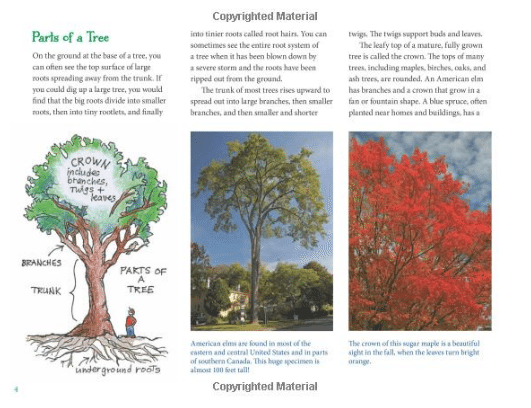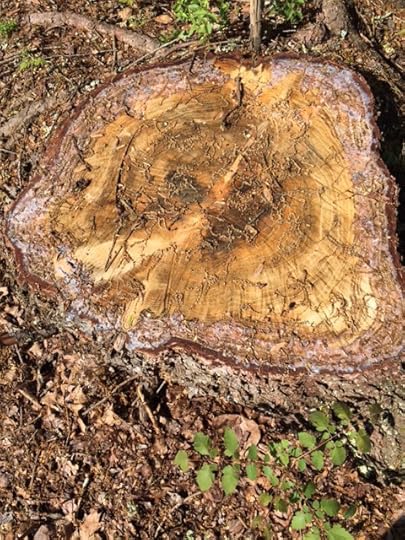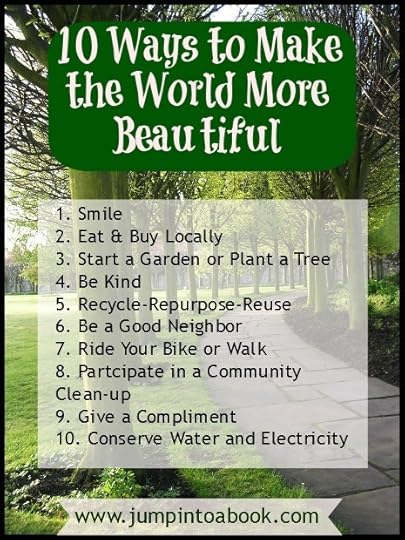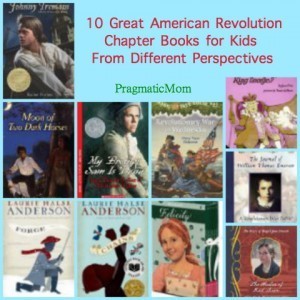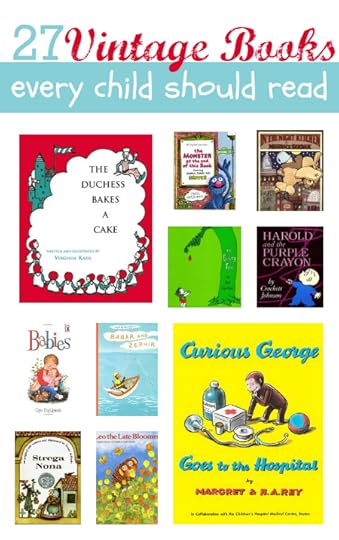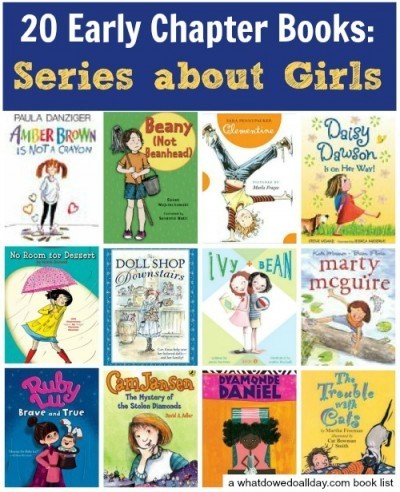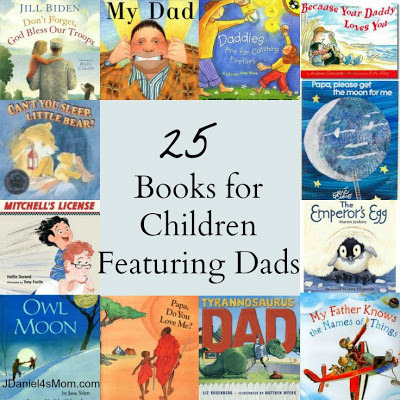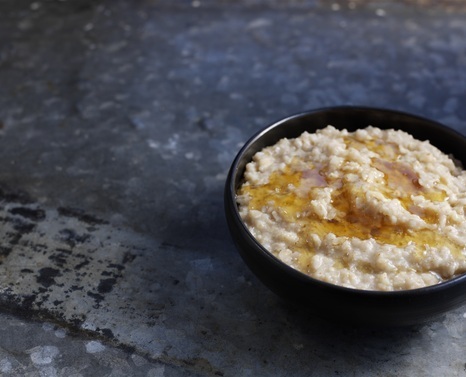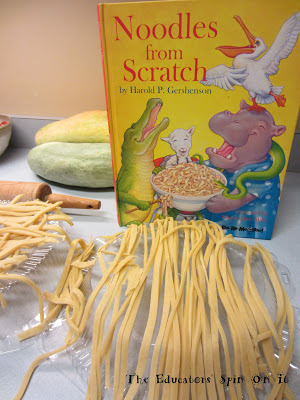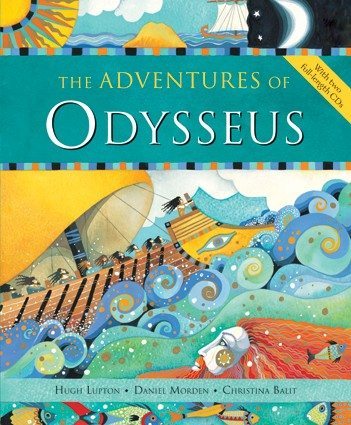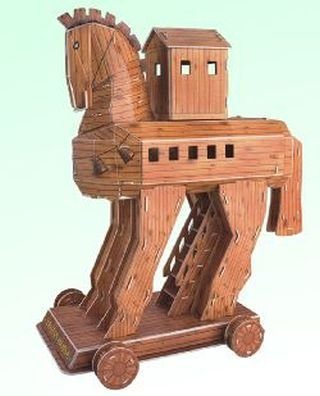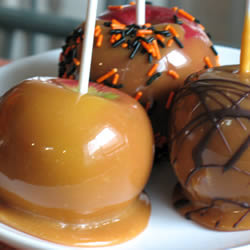Valarie Budayr's Blog, page 42
April 21, 2017
Happy Earth Day: What is Treecology?
Happy Earth Day Everyone! I think for me everyday is Earth Day. We are great lovers of nature in this house and we try really really hard to walk gently on the earth.
“When we try to pick out anything by itself, we find it hitched to everything else.” John Muir
Nothing could be farther from the truth than when we talk about trees.
Treecology: 30 Activities and Observations for Exploring the World of Trees and Forests by Monica Russo is a young naturalists guide into the world of trees.
Though we often think of trees living in a forest, tress are actually found everywhere. Wherever you find a tree you will find an entire world within and around it.
Treecology uses the perfect blend of scientific fact and activity based explorations for ages 7 and up.
The insights and information is an invitation to look deeper, and experience nature first hand through its “Look for” and Listen for” activities.
Children observer the diversity of trees by looking for a variety of shapes, colors, ad patterns found on and around trees.
Treecology also brings home the message that not only are we to be observers and naturalists but we are to be Tree Keepers as well.
We are a family of tree lovers and at times even tree huggers. Treecology reminded me of some fun activities I had forgotten about such s crayon rubbings of leaves. on ago we use to gather leaves and press them, then iron them between wax paper and make pretty pictures to hang on the wall. We would also use the pressed leaves to decorate other objects as well.
Along with al of the incredible crafts in Treecology, there are also the amazing discoveries. Such as do you know how may leaves there are on a tree? Can you identify a pine tree by its pine needle clusters? Do you know which trees make noise or that their is an entire world living on, in and around a tree ?
I greatly enjoyed the wild life chapter and discovering grouses. One activity that brought more joy and excitement in this family was becoming a “moth whisperer” and attracting beautiful tree moths to the trees in our yard.
It’s not enough just to explore, discover, and take care of tress, we have to embrace the future as well by learning about the way trees reproduce via their seeds, cones, an pods.
Just think, an entire tree lives inside a tiny acorn. This time of year the maple trees are seeding with their fruit called Samaras. We called them helicopters and loved to collect them and toss them in the air. It’s so much fun to watch them spin down.
Treecology also boasts a wonderful resource section which includes tree terms, Interactive Common and Scientific Names, resources of organizations and the most incredible teachers guide which helps deepen Treecology and the experiences holds even further.
Seeds and their tree seedlings are the forest of the future. A recent study showed that the #1 thing we can do to reverse climate change is to plant trees.
On this Earth Day please take action and see what you can do to walk more gently on the earth, to invest in the future by taking care of our planet. A great first step would be plant trees in your yard or neighborhood. Then go exploring inside this new world you’ve planted. Treecology is an incredible guide for children that will have them awe and wonderstruck about the world around them and parents can grab their copy HERE.
Happy Earth Day Everybody!
Something To Do
Learn about Tree Rings
As a tree grows, it produces new layers of wood around the trunk, just under the bark. If a tree is cut down, the layers are visible in a cross-section. The layers appear as a set of concentric circles known as tree rings.
In general, one layer of wood grows each year. Each layer consists of two colors of wood: light-colored “earlywood” that grows in the spring and summer plus darker, denser “latewood” from the fall and winter.
Tree rings—also known as annual growth rings—vary in size each year depending upon the environmental conditions that the tree experiences. For most locations, tree rings will be wider during years of abundant rainfall and narrower during times of drought.
By counting back from the year a living tree was cut, it is possible to determine how old the tree is. Find a tree stump and start counting the tree rings from the outside and move to the center of the tree trunk.
Why Trees Matter-Fun Facts About Trees
You can also find more infographics at Visualistan
I’m now asking you. I asking, “What will you do to make the world a more beautiful place ? “ It’s completely alright if you don’t know what that is yet. The joy is in the discovery. Here’s a few ideas to get you started:
10 Ways to Make the World More Beautiful
1. Smile
2. Eat and Buy Locally
3. Start a garden – Plant a Tree
4. Be Kind
5. Recycle – Repurpose – Reuse
6. Be a Good Neighbor
7. Ride Your Bike – Walk
8. Participate in a Community Clean-up
9. Give a Compliment
10. Conserve Water and Electricity
**some of these links are affiliate links
Discover even MORE Jump Into A Book Booklists and their companion activities by visiting and following my Pinterest Board!
Follow Valarie Budayr @Jump into a Book’s board Jump Into a Book Kidlit Booklists on Pinterest.
Follow Valarie Budayr @Jump into a Book’s board A Year In The Secret Garden on Pinterest.
The post Happy Earth Day: What is Treecology? appeared first on Jump Into A Book.
April 20, 2017
Advice from Author Elizabeth Rusch: Three Books, Three Research Methods
Late last year, Scholastic Reading Club’s editors released a list of top trends in children’s books for 2017. When I read the list, I cheered. In the number four spot: “The importance of research will grow.”
“Yay!” I thought. “I’m trendy!”
Trendy is not an adjective often used to describe me or my work as a children’s book author. But I love research, and research underscores so much of my writing, both fiction and nonfiction. To me, research is so much more than the trips to the library I took as a student or the web searches so common in classrooms today. Research for me is an adventure.
I have three new books out this year that demonstrate how vital research is to my work as a children’s book author – and how fun it can be.
Interviews
(Houghton Mifflin Harcourt, Feb. 2017)
In this picture book/comic book hybrid for kids ages 4-8, two children (Anna and Oliver) give readers inside information and advice about what it’s really like when a new baby joins the family. I suppose I could have written this book by trying to imagine what the experience of welcoming a new baby is like for a child. But I really wanted the book to feature a kid’s-eye view: what they expected, what surprised them, how they responded. So I interviewed them.
When I was pregnant with my second child, I asked my then-toddler son all about his experience waiting for, meeting and living with his new little sister. When I met anyone expecting a second child, I chatted with their children and jotted down notes. By the time I was ready to write READY, SET..BABY! I had pages and pages of wonderful material such as:
“Waiting for the baby is worse than waiting for pizza.”
“Everyone always yells: Support the head! Support the head!”
“You won’t really have someone to play with. Playing with a baby is like playing with loaf of bread.”
Interviewing experts (in this case, kids!) is one of my favorite research methods. In addition to learning so much about any topic, people always give me little gems that make me laugh, or cry, or tingle with amazement – and really help my writing come to life.
Primary Sources
THE MUSIC OF LIFE: Bartolomeo Cristofori and the Invention of the Piano
(Atheneum, April 18, 2017)
I wish I could have interviewed the person who invented the piano for my biography of him. But since Bartolomeo Cristofori lived in the late 1600s and early 1700s that was not possible. I did find a wonderful expert, instrument maker Kerstin Schwarz, who restores and builds replicas of Cristofori pianofortes. She invited me to her workshop to see how Cristofori put together his groundbreaking instrument. While that gave me a deep understanding of the problems Cristofori had to solve to create a keyboard instrument that could play both loudly and softly, it didn’t tell me much about the inventor’s life.
For that, I delved into primary source materials. Scouring primary sources is a little like searching for clues to solve a mystery. I found Cristofori’s baptismal record and death notice, notes from a 1709 interview, and diaries from court musicians at the time. But surprisingly, the most fun and illuminating primary sources were invoices to the treasury of the Medici, the wealthy Florence family that employed Cristofori. It was here that I read about how his house was furnished – “a small pine desk”; “eight backless stools of pine, painted green”; “one fine pillow with a taffeta cover.” I learned the odd materials he used to repair and built keyboard instruments (“vulture features” and “fish glue”). And I learned where he worked (in the Medici workshops and later in a quieter home workshop) and where he transported instruments for performances. That research allowed me to a walk in Bartolomeo Cristofori’s footsteps when I visited Florence, so I could see for myself what he saw and what might have influenced him.
It still amazes me that primary sources helped me reconstruct the life and work of someone who lived three hundred years ago. Primary sources were so essential to THE MUSIC OF LIFE that I feature some excerpts in the main text. And in the backmatter, I describe in detail how I pieced together Cristofori’s story from primary sources in the hopes that budding young historians might find it inspiring. (Plus I think a story is much more interesting than a boring bibliographic listing, don’t you?)
On-Site Research
IMPACT!: Asteroids and the Science of Saving the World
(Houghton Mifflin Harcourt, forthcoming November 2017)
Primary sources kicked off my research for this narrative nonfiction account of how asteroids threaten our planet and what scientists are doing to avert catastrophe. I begin the book by telling the story of the Chelyabinsk asteroid that exploded over a Russian city in 2013, which I reconstructed from newspaper and online articles, videos and even social media postings. But to show what scientists are doing to track and understand asteroids and to prevent one from striking our planet, I joined the scientists in the field.
Doing on-site research gives me insight and experiences that can make a subject real for readers. To research IMPACT, I hiked into Meteor Crater with the scientist who linked dinosaur extinction to an asteroid strike; I walked the rolling hills of Creston, California, with a team of meteorite hunters searching for rocks dropped from space; and I stayed up all night at an observatory on the top of Mount Lemmon scouring the night sky for near-Earth asteroids. (We found 10 that night.)
While middle grade readers cannot share this experience with me until IMPACT publishes in November, I take a similar approach in the other books I’ve written for the acclaimed Scientists in the Field series: The Mighty Mars Rovers: The incredible adventures of Spirit and Opportunity; Eruption!: Volcanoes and the science of saving lives; The Next Wave: The quest to harness the power of the oceans. Actually all the books in this series feature this on-site research approach and are worth getting into the hands of budding scientists ages 8 and up.
If you would like to explore more of my “trendy” research-driven books or see some photos of my research adventures, please visit my website (Photos are under the Fun Stuff button.)
Happy reading and happy research!
**some of these links are affiliate links

Elizabeth Rusch
Parents and teachers will find book-related activities under the Guides button.
Elizabeth Rusch loves sharing her research and writing methods with students. Learn more about her school visits here
The post Advice from Author Elizabeth Rusch: Three Books, Three Research Methods appeared first on Jump Into A Book.
April 19, 2017
Revisiting the Garden-Secret Garden Wednesday Nest-Building Fun
The air today is filled with the freshness and promise of SPRING. This weather makes me look forward to several months of hiking, traveling and gardening.
Speaking of gardening, I want to take a look back to a wildly popular series I did earlier this in the Spring of 2016. Jump Into A Book readers loved it and I had a blast creating it as well. It was fun, fresh, and truly got everyone in the “garden” mood 
April 18, 2017
Picture Books and Activities that encourage Rainy Day Play
{Guest post by Hannah Rials}
The kids are home and it’s raining. You know what comes next, right?
“I’m bored!!!”
“There’s nothing to do!”
“Moooooooom!!!”
Yes, I know you know what I’m talking about. They can’t go outside because it’s too soggy out there and you really don’t want them sitting like zombies in front of the electronic babysitter for hours, or playing video games till their gray matter starts to have the consistency of Swiss Cheese. You’re a good parent, a responsible parent. You know that by stimulating their little minds and encouraging their natural creativity is a great alternative.
Books and reading are always a wonderful go-to for parents but unfortunately our little darlings don’t always agree. BUT, what if the books they read are full of fun projects to make their gray bright! Here are some recent books that I’ve had the pleasure of reviewing and these would be great recommends for parents of littles:
Just Imagine and Play books
On the Site: Activity Book is such exciting book with tons of fun activities to learn about a construction site. Not only do we have activities inside the books, but stand up characters and stickers are included, as well as a board game, and a sticker page.
You can spend hours upon hours exercising your mind with puzzles, games, and mazes. So get started now!
Find Your Way books by Paul Boston
Under the Sea is an interactive book journey traveling through the ocean to the Merp’s castle! Along the way, you will learn about mapping skills as well as practice some math. Find the pearls, burgers, and shark teeth that are needed at the castle, but remember that there will always be roadblocks.

In the Jungle is another interactive traveling book, but this time, we explore the exciting areas of the jungle! We have to find red feathers, blue bananas, and yellow kazoos. But don’t forget to be a kind driver as you’re going along and help lost travelers to find their way.

Underground: Choose your mode of transport and set off on an adventure that will take you all the way across the underground. Can you navigate huge roundabouts with sleeping dragons, or cross bridges guarded by Anteaters? Negotiate pesky road obstructions by solving the math problems correctly.

Something to Do
1. Here are a ton of map activities to make your map skills even better at Imagination Soup!
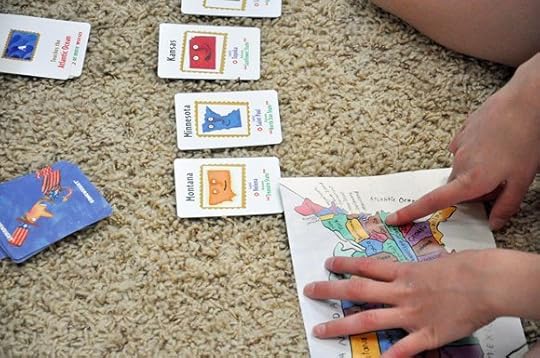
2. Ever want to try Octopus before? Well, me either. But here’s an octopus shaped pizza so you can say you did!

Stuck on Fun by Jannie Ho
Since this is an activity book, I can’t talk to you about the story, but oh my goodness is this an adorable interactive book. The cover uses fantastic colors that are whimsical, and the characters on the cover are charming.
After instructing young crafters on how to use this book, they are just allowed to run rampant with the extensive collection of stickers, punch out characters, and stencils. We are encouraged to embellish our creations with markers and glue, so obviously, I pass along the encouragement.
Children are going to love this activity book with all it’s many possibilities. No additional activities are needed. All the fun you could have is right here!
Fun with Stitchables: Easy Patterns to cross-stitch and sew by Suzy Ultman

Another fun activity book with unique characters. Learn to cross stitch and sew, two skills that I have never mastered. Here is a wonderful introduction to these fun crafts with 36 punch-out templates for your learning pleasure! I would’ve loved having this as a kid, and maybe by now, I’d be a sewing master right now!
Enjoy this other charming activity book–a great way to spend a rainy afternoon!
**Some of these links are affiliate links. That means if you click and buy, I may get a very small commission.
This money goes towards postage and supplies to keep books and ideas in the hands of young readers!
 HANNAH RIALS: A Maryville native and current college student at University of Tennessee at Chattanooga, Hannah began writing her first novel at age twelve. Eight years later, the result is her new YA novel Ascension; a modern day teenage romance filled with “double-blooded” vampires and revenge-seeking witches. When not spending time with her family and playing with her beloved Corgi, Buddy, Hannah leads a creative group, crafts and cultivates her writing skills. Connect with Hannah on Facebook, Twitter and via her website.
HANNAH RIALS: A Maryville native and current college student at University of Tennessee at Chattanooga, Hannah began writing her first novel at age twelve. Eight years later, the result is her new YA novel Ascension; a modern day teenage romance filled with “double-blooded” vampires and revenge-seeking witches. When not spending time with her family and playing with her beloved Corgi, Buddy, Hannah leads a creative group, crafts and cultivates her writing skills. Connect with Hannah on Facebook, Twitter and via her website.
–
Enjoy month-by-month activities based on the classic children’s tale, The Secret Garden! A Year in the Secret Garden is a delightful children’s book with over 120 pages, with 150 original color illustrations and 48 activities for your family and friends to enjoy, learn, discover and play with together. Grab your copy ASAP and “meet me in the garden!” http://amzn.to/1DTVnuX
The post Picture Books and Activities that encourage Rainy Day Play appeared first on Jump Into A Book.
April 16, 2017
Weekend Links: Some Fun Possibilities for Summer Reading Booklists
Happy Sunday! Can you believe there’s only around 8 weeks of school left?! People I know (including myself) are already making summer plans and looking forward to a more relaxed pace.
But parents also know that summer is prime time for the “summer slide” when it comes to reading. Scholastic has an excellent report called 10 Critical Facts about Summer Reading that addresses the issue of learning or reading skill losses during the summer months are cumulative, creating a wider gap each year between more proficient and less proficient students. By the time a struggling reader reaches middle school, summer reading loss has accumulated to a two–year lag in reading achievement.
Below are some great ideas and suggestion for books to add to your summer bookshelf to help keep summer slide at bay in your home. Enjoy!
Summer Reading Tree: Forming “Roots” for Motivated Readers
Summer Reading Tree- 15 Green Books for Kids
The A-Z Summer Reading Tree: 26 Ways To Encourage Reading This Summer
I’ve also discovered some other wonderful summer reading resources from fellow bloggers and book lovers this week that I would like to share:
10 Great American Revolution Chapter Books from Pragmatic Mom
Multicultural Books That Have Tugged At My Heart Strings (The 2017 Version) from Franticommy.com
27 Vintage Books Every Child Should Read from No Time for Flash Cards.
What Do We Do all Day had a great booklist of Early Chapter Books for Kids {Series about Girls}
We love how JDaniels4Mom shined the spotlight on Dear ol Dad with this booklist: 25 Children’s Books Featuring Dads
Don’t forget to include your local library in your summer reading efforts as well.
25 Mini Adventures in the Library from Mama Scout is really fun and kids will learn a lot about where things are in your local library.
Happy Reading!
–
FREE Gift! Free 180 Multicultural Book Ideas ebook to inspired fun Reading!
School is almost out and our youngsters are settling into a new summer routine of sleeping in and hopefully doing some exploring and discovering. With the hectic days of summer just beginning, oftentimes one of the first habit to go by the wayside is the habit of daily reading.
Reading is always an important part of our children’s lives no matter what time of year it is so I decided to wrap my knowledge of fun kidlit books and activities up with my experience as one of the co-founders of the very successful Multicultural Children’s Book Day and create a unique resource for parents who are looking for creative ways to keep their kids reading this summer. Reading is important, but so is helping our young readers learn about other cultures, religions and traditions through the pages of these books. Here are some great booklists and resources that I have created over the years at Jump Into a Book that will not only give parents and readers great ideas on diverse kids’ books, but fun activities related to books that will bring stories to life!
Sign up below for quick and free access to 180 Multicultural Book Ideas: World Travel through Kidlit Summer Reading!
Sign up for 180 Multicultural Book Ideas for Summer Reading
* indicates required
Email Address *
First Name
Last Name
The post Weekend Links: Some Fun Possibilities for Summer Reading Booklists appeared first on Jump Into A Book.
April 13, 2017
Author Katherine Paterson is coming to Maryville,Tennessee!
Katherine Paterson is coming to Tennessee! My home town of Maryville to be specific.

Katherine Paterson at the NCM Launch Zone: White House on the Waterfront Event
Why am I so ecstatic?
Katherine Paterson is the author of more than 30 books, including 16 novels for children and young people. She has twice won the Newbery Medal, for Bridge to Terabithia in 1978 and Jacob Have I Loved in 1981. The Master Puppeteer won the National Book Award in 1977 and The Great Gilly Hopkins won the National Book Award in 1979 and was also a Newbery Honor Book.
I think one of the most wonderful journeys I’ve been on with Katherine is watching how my children have reacted to her books. Katherine captured them and drew them into a world they didn’t know existed. Sometimes that world wasn’t a pretty one, such as death taking a friend too soon. Katherine always finds the silver lining in a dark cloud and her writings actually teach all of us how to handle difficult situations with grace and beauty. To have faith in something greater than oneself and to believe in persevering, survival, and beauty. She also has a keen sense of humor and has had us laughing often inside the pages of her stories.
Katherine has created characters we can relate to and who have become our dearest friends. We need only mention them by name such as Jess and Leslie, Marvin, Jacob, Lillie and many others. Each one ready to take us on an adventure and discover something new about ourselves and others.
Katherine Paterson’s contribution to children’s literature, has been tantamount in raising the current and next generation of compassionate readers who are touched heart, mind, and soul.
As you can imagine, I will be at this event with bells on! If anyone is in the Maryville, TN, please join us!
Saturday, April 22nd – 25th-The Bridge to Katherine Paterson
View the graphic above for her full schedule or visit Maryville College’s website HERE.
A family-friendly event held outside on the pedestrian bridge at the Blount County Public Library in anticipation of Katherine Paterson’s arrival. Join us for crafts, music, and games on the bridge over the downtown Maryville greenway!
The Maryville College Center for Campus Ministry and Maryville Adventures in Studying Theology (MAST), in conjunction with Westminster Presbyterian Church and the Blount County Public Library, are proud to present this festival celebrating Katherine Paterson’s work and life.
Terabithia and Beyond will serve as the inaugural celebration of our Maryville Adventures in Studying Theology program, as well as this year’s edition of the February Meetings at Maryville College. We are grateful for partners in Knoxville and in Maryville, as well as for the Lilly Endowment, for making this celebration possible.
The Maryville College website also has some wonderful links to Katherine’s podcasts, articles and other items of interest as well. You can view them on their left sidebar HERE.
Hope to see you there!
The post Author Katherine Paterson is coming to Maryville,Tennessee! appeared first on Jump Into A Book.
April 12, 2017
Revisiting Secret Garden Wednesday-Porridge Anyone?
Porridge anyone?
If you are laughing and thinking, “HUH?” that’s ok…you’re not alone!
Just to quickly recap-every Wednesday you can drop by here and find new and special happenings in the Secret Garden. There’ll be crafts, great food, fun and laughter. So please be sure to come by and see us in our Secret Garden created just for you.
NOW…let’s talk porridge. Porridge is a dish made by boiling ground, crushed, or chopped starchy plants – typically grain – in water or milk. Wikipedia Despite its gloppy appearance, it is actually quite tasty. Basically it’s similar to oatmeal that many of us eat for breakfast. Porridge is traditional and common in the English-speaking world, Germany and the Nordic countries. Oat porridge has been found in the stomachs of 5,000-year-old Neolithic bog bodies in Central Europe and Scandinavia. Porridge with Treacle was also a staple in the book The Secret Garden so I included it as ob of our tasty treats in A Year in the Secret Garden.
What is Porridge ?
Porridge is a dish made by boiling ground, crushed, or chopped cereal in water, milk, or both, with optional flavorings such as sugar, cinnamon, nuts, raisins, is usually served hot in a bowl or dish.
Have you ever noticed that in most of our favorite children’s classic stories that they are always serving porridge or it’s bad version equivalent gruel ? There’s probably a good reason for that. Many of our favorite books are set in England or Great Britain. Northern Europe including Scandinavia have been eating porridge for centuries. I love the oat porridge of England and Scotland. My parents being from Sweden meant I ate a rice sort of porridge known as groat. Porridge can be made from any type of grain and is so very good and tasty.
According to the Daily Telegraph, porridge transformed mankind.
Alistair Moffat, a DNA specialist from Great Britain said, “The greatest revolution of our history wasn’t the invention of the iPad, it wasn’t the invention of the steam engine, it wasn’t all the things you might lay your mind to. The great invention, the greatest revolution in our history was the invention of farming. Farming changed the world because of the invention of porridge.”
Porridge is a hearty meal that can be modified to either a sweet dish or a savory dish depending on how seasonings are being added. Over the past couple hundred years, porridge is eaten as a breakfast meal and let’s one stay full most of the day. In the story the Secret Garden, people ate two meals a day. Porridge in the morning and then supper at night. It was only the upper classes that would have more than two meals a day.
In other literary favorites such as Oliver Twist, “each boy had one porringer, and no more – excep t on occasions of great public rejoicing” – has been viewed as a watery symbol of deprivation. The watery deprived version of porridge is known as gruel. The Roman armies as they occupied Great Britain were fed ‘water-gruel.’ Later various prison systems in Great Britain would serve their prisoners water-gruel and the term “doing gruel or doing porridge” became a term for being in prison.
t on occasions of great public rejoicing” – has been viewed as a watery symbol of deprivation. The watery deprived version of porridge is known as gruel. The Roman armies as they occupied Great Britain were fed ‘water-gruel.’ Later various prison systems in Great Britain would serve their prisoners water-gruel and the term “doing gruel or doing porridge” became a term for being in prison.
Let’s look back a little bit into history and really see where the story of porridge leads us.
In those old days, they cooked in the kitchen with a big kettle that always hung over the fire. Every day they lit the fire and added things to the pot. They ate mostly vegetables and did not get much meat. They would eat the stew for dinner, leaving leftovers in the pot to get cold overnight and then start over the next day. Sometimes the stew had food in it that had been there for quite a while hence the rhyme, “Peas porridge hot, peas porridge cold, peas porridge in the pot nine days old.”
In peasant cottages there was no kitchen to cook in. The poorest families had only one room where they cooked, ate, worked and slept. It is also possible that most of these extremely poor families owned only one kettle. Poor town-dwellers usually didn’t even have that, and obtained most of their meals ready-made from shops and street vendors in the Medieval version of “fast-food.”
Those who lived on the edge of starvation had to make use of every edible item they could find, and just about everything could go into the pot (often a footed kettle that rested in the fire rather than over it) for the evening meal. This included beans, grains, vegetables and sometimes meat — often bacon. Using a little meat in this manner would make it go farther as sustenance.
To really understand porridge we really must go to Scotland. Porridge or Parritch is one of the national dishes of Scotland.
Traditions surround the making and eating of porridge. Stirring should always be done clockwise (for luck) with a spirtle or theevil, a wooden stick tapering to a rounded point, for stirring, and a carved head. In Scots, porridge was always referred to in the plural and was customarily eaten while standing, but the reasons for this latter custom aren’t really known. Some think it was due to the proverb: “A staunin’ sack fills the fu’est” (A standing sack fills the fullest), while others thought people ate standing up in case of a surprise enemy attack.
Once cooked, the porridge is ladled into porringers (bowls) with a separate bowl of milk, buttermilk, or thin cream 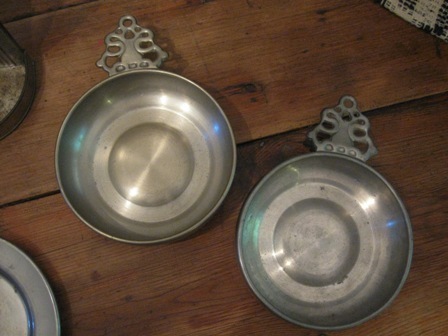 close by. Each spoonful of porridge was dipped into the cold liquid and then eaten. Some sprinkled sugar over the porridge, and others preferred honey, treacle or syrup, or a small square of butter. Porridge was sometimes poured into a drawer in the kitchen dresser to be sliced when cold, either for eating out in the fields or for reheating in the evening.
close by. Each spoonful of porridge was dipped into the cold liquid and then eaten. Some sprinkled sugar over the porridge, and others preferred honey, treacle or syrup, or a small square of butter. Porridge was sometimes poured into a drawer in the kitchen dresser to be sliced when cold, either for eating out in the fields or for reheating in the evening.
Porridge for your Health
Porridge is highly nutritious because oatmeal contains protein, carbohydrate, fats, and soluble fiber, all the B vitamins, vitamin E, calcium, and iron. For the very poor in Great Britain, porridge prevented scurvy and other ailments from the lack of vitamins A, C, and D when one added milk and vegetables to the porridge.
What is Treacle ?
So now we get to the sweet stuff. For those of us who live in the United States, treacle will be a mystery but I’m hoping to end that for you right now. For those of you who live in Great Britain or the Commonwealth I imagine treacle has found a way to your heart , stomach, and table.
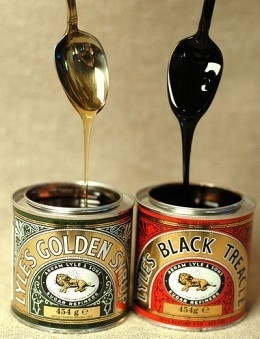 Treacle is what we call molasses here in the States. Treacle is any un-crystallized syrup made during the refining of sugar. The most common forms of treacle are the pale syrup known as golden syrup and the darker syrup usually referred to as dark or black treacle. Dark treacle has a distinctively strong, slightly bitter flavor, and a richer color than golden syrup,yet not as dark as molasses. Golden syrup is the main sweetener in treacle tart.
Treacle is what we call molasses here in the States. Treacle is any un-crystallized syrup made during the refining of sugar. The most common forms of treacle are the pale syrup known as golden syrup and the darker syrup usually referred to as dark or black treacle. Dark treacle has a distinctively strong, slightly bitter flavor, and a richer color than golden syrup,yet not as dark as molasses. Golden syrup is the main sweetener in treacle tart.
For those of you who are Harry Potter fans, Treacle Tart and Treacle Pudding were among Harry’s favorite foods.
Molasses has a stronger and more robust taste than treacle. In the US molasses is found in bottles in the baking section of your grocery store and treacle can be found in cans/tins in grocery stores in Great Britain.
Hungry? Even if this information didn’t make you want to mix up a bowl of hot oatmeal, just think of how unique the above info was! There’s more of these fun, time-period-related recipes, crafts and activities in my book.
Enjoy more month-by-month activities based on the classic children’s tale, The Secret Garden! A Year in the Secret Garden is a delightful children’s book with over 120 pages, with 150 original color illustrations and 48 activities for your family and friends to enjoy, learn, discover and play with together.
Whimsical author/illustrator Marilyn Scott-Waters and I created this book to not only encourage families to read and participate in some “unplugged” activities, but to also delve into the beauty and the wonder of this classic children’s tale. Get the full scoop on this vibrant book HERE and “meet me in the garden!”

The post Revisiting Secret Garden Wednesday-Porridge Anyone? appeared first on Jump Into A Book.
April 11, 2017
A Year in the Secret Garden turns THREE! #ChildhoodUnplugged
Hard to believe it was three years ago that co-author, Marilyn Scott-Waters and I released our much-anticipated book, A Year in the Secret Garden, to a new generation of families THREE years ago! Where does time go?
This book came to be because, Marilyn Scott-Waters, a delightfully creative person who also happened to be a veteran author, and I were both inspired by the classic children’s book, The Secret Garden in our own unique ways. As moms, her and I had both spent years on a quest for new ways to pull books off of shelves and stories off of pages while encouraging kids to step away from technology for a while.
Despite data that shows that 80% of natural vitamin D comes from the rays of the sun, many children, roughly only 23% are spending enough time outside and welcoming the sun’s rays. Most children do not get enough vitamin D from food alone and are at risk of deficiency if they are spending prolonged periods of time indoors. This to us was a cry to create not only a clever solution, but also an amazing guidebook to help parents help their children regain their interest and love of nature.
Thus the idea/concept of A Year in the Secret Garden was born.
In a nutshell we wanted A Year in the Secret Garden to be the catalyst in introducing the beloved children’s classic, The Secret Garden to a new generation of families.
We wanted this high-quality, beautiful book to be a guide that used over two hundred full-color illustrations and photos to bring the magical story to life, with fascinating historical information, monthly gardening activities, easy-to-make recipes, and step-by-step crafts, designed to enchant readers of all ages.
And this book was not designed just for kids! Each month within the book has chapters that help families unlock the mysteries of a Secret Garden character, as well as have fun together creating the original crafts and activities based on the book. Our goal is to not only raise awareness for the necessity of families spending more quality “unplugged” time together, but to also share monthly activities that incorporate nature and the outdoors as well.
And that was what AYITSG ended up being 
April 9, 2017
Weekend Links: Fun Recipes Inspired By Children’s Books
Welcome to Weekend Links! This week I found a multitude of excellent kid-friendly recipes inspired by children’s books. Cooking and baking as a family is one of my favorite reading-inspired projects. Here at Jump Into a Book, we’ve done some fun cooking activities like Happy Sun Bread and Strega Nona supper and here are some other delightful cooking ideas (inspired by children’s books) your family may want to try:
Making noodles from scratch – little hands that cook with books- The Educator’s Spin on It
Johnny Appleseed Story & Mini Apple Pie Activity-How to Homeschool My Child.
Dr Seuss Cat in the Hat Snack-Fancy Frugal Life
I LOVE this “Cookies and Bookies” idea from Growing Book by Book-Start a Cookies and Bookies ritual with your kids.
And if you are more than a “little bit” of a Harry Potter fan, you will enjoy 12 book-inspired recipes you can make for real! via @POPSUGARFood
What book inspired links did you find this week?
–
Enjoy month-by-month activities based on the classic children’s tale, The Secret Garden! A Year in the Secret Garden is a delightful children’s book with over 120 pages, with 150 original color illustrations and 48 activities for your family and friends to enjoy, learn, discover and play with together. Grab your copy ASAP and “meet me in the garden!” http://amzn.to/1DTVnuX
The post Weekend Links: Fun Recipes Inspired By Children’s Books appeared first on Jump Into A Book.
April 6, 2017
For the love of Greek Mythology: The Adventures of Achilles by Hugh Lupton

I am not sure if it’s the changing of the seasons or just the busy-ness of my life, but I’ve been in the mood to snuggle up with some of our favorite Greek Mythology books lately! Last month I shared a family favorite; The Adventures of Odysseus. This wonderful story, paired with vibrant illustration still mesmerizes me to this day.
This month, I’d like to share another gorgeous book from Barefoot Books-The Adventures of Achilles. Barefoot Books are high quality and unique and not typically found on Amazon. I’ve been a Barefoot Book Ambassador in the past but my hectic children’s book writing and publishing schedule forced me to put that venture on hold for now. BUT, I am still a huge fan of the diversity, quality and uniqueness that Barefoot Books offers.
The Adventures of Achilles tells the mythical story behind this amazing warrior’s history and of the fall of the great walled city of Troy. The story is told beautifully, but I do not recommend this for young children. Some battle parts might be a little hard to read for children under the age of ten. However, this is a great book—your child will be extremely prepared for high school English. Carole Henaff’s illustrations are beautiful and truly represent the Greek culture.
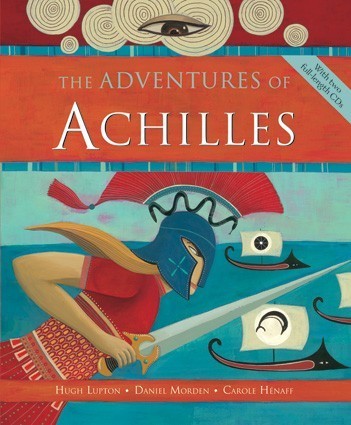
One day, the king of all the Gods, Zeus, fell in love with a water nymph named Thetis. However, he heard a prophecy that her son would one day become greater than his father. Of course, that would never do for the King of the skies. So he decided to find a mortal husband for her—Peleus, the great warrior king. Peleus instantly fell in love with her beauty, and Zeus led him to her beach. When she arrived, riding a dolphin like a horse, he proposed, but she only consented to marriage if he could catch her. After many days of trying, he succeeded and, they were married immediately.
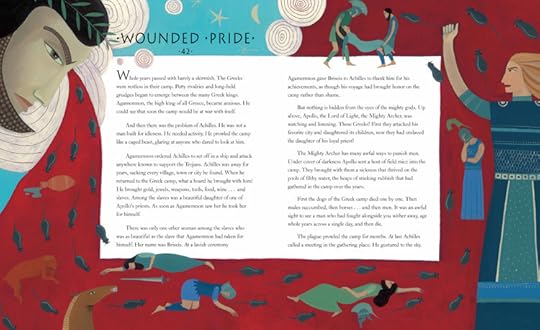
Thetis soon bore a son destined for greatness, but also destined for a short life. She took Achilles as a boy and dipped his body in the river Styx so that he would be immortal—all except for his heel, where she held him. Achilles grew into a powerful, feared warrior who commanded greatness and would one day be needed for a great war.
Years later, Paris, a prince of Troy with a face like a god, was walking when Zeus saw him. Many years ago, the goddess Eris had thrown an apple of discord to choose who—Hera, Athena, or Aphrodite—was the most beautiful goddess. They were still arguing about it. Hermes brought the apple to Paris and gave him his mission. Only after much consideration and after the goddess of love offered him the most beautiful woman in the world, did he choose Aphrodite. Soon after Paris was sent to the Greek palace of Menelaus, where in the night, he and Helen, Menelaus’s wife, snuck away. Infuriated by this betrayal, Agamemnon went to his brother, Agamemnon—high king of the Greeks—and convinced him to rally an army against the Trojans. The young king Odysseus was sent to find Achilles since Agamemnon was told that he would not win the war without him.
For years the Greeks and Trojans fought, and whenever they saw Achilles fought, Trojans were struck with fear. But the Trojans still had Prince Hector, their equivalent to Achilles. Soon both sides grew weary of the war, and the Trojans formulated the plan to stay inside their fortified, strong city walls and just wait until the Greeks gave up. This went on for many years, and Achilles was sent away to destroy allies of Troy. When he returned, he offered Agamemnon spoils, including a daughter of a priest from the temple of Apollo. Achilles kept a slave girl for himself. However, Apollo was not happy with this, so he sent a colony of infested rats into the Greek camp, which infected dogs, horses, and then men. To get rid of the plague, Agamemnon was forced to release the priestess, and in exchange, he took Achilles’ slave girl. This infuriated the warrior, and from that moment on, he vowed not to fight in the war.

Inspired by Zeus months later, Hector lept from bed and led his army against the Greeks, and at this time, they gained a victory. However, Patroclus, Achilles’ closest friend, took Achilles’ armor to strike fear in Trojan hearts, but he was doomed to die. When he went up against Hector, he was dead in a matter of minutes. Achilles’ swore to avenge Patroclus’s death by killing Hector. He leapt onto his chariot, chased Hector to the walls of Troy, and killed him, with the help of Athena.
After Patroclus’s body was burned on a funeral pyre, late that night, King Prium of Troy and his youngest daughter drove through the Greek camp to retrieve his son’s body. Achilles’ took pity on the old king, who reminded him of his own father who he would never see again. He allowed them to take Hector’s body and promised that he would hold off the Greek army while they grieved. While this was taking place, Achilles was falling in love with Prium’s daughter.
Once Hector’s funeral was over, the fighting resumed. During the day Achilles would fight. At night, he would meet Prium’s daughter. One night, Apollo whispered in Paris’s ear about his sister’s relationship and to follow her with a bow and arrow. When Paris followed them, Achilles revealed that his only vulnerable spot is his heel. At that moment, Paris loosed his arrow and Apollo stabbed it into Achilles heel. He died immediately.
With their best warrior dead, Odysseus decided to build a great wooden horse where Greeks hid and burned the Greek camp. The trojans brought the horse into their city, and after they had all gone to bed, the Greek soldiers climbed out of the camp and burned the city of Troy to the ground.

The Adventures of Achilles tells the mythical story behind this amazing warrior’s history and of the fall of the great walled city of Troy. The story is told beautifully, but I do not recommend this for young children. Some battle parts might be a little hard to read for children under the age of ten. However, this is a great book—your child will be extremely prepared for high school English. Carole Henaff’s illustrations are beautiful and truly represent the Greek culture.
Something To Do
I’ve seen some pretty ambitious projects involving popcicle sticks when it comes to creating a Trojan Horse, but I also like this 3D Trojan Horse Puzzle kit!
Water Nymphs are magical creature similar to mermaids. To create a dainty flower crown fit for a water nymph princess, check out Colorful-Crafts sweet daisy flora crown activity.

Eris’s Golden Apple of Discord:
“The caramel coating is very gooey, so refrigerate the apples for about 15 minutes, or until the caramel has firmed up. (You will need 6 wooden craft sticks for this recipe.)”
Happy Reading!
**some of these links are affiliate links.
A HUGE congrats to JIAB Intern, Hannah Rials! Her debut YA book, Ascension , is a finalist for the Ben Franklin Awards, Best New Voice in:Children’s/YA Fiction!

The winners will be announced on April 7, 2017 and we can’t wait to hear the results. Hannah’s book was published by my publishing imprint, Aletha Press and this award is one of the highest national honors for independent book publishers. So proud of you Hannah! Grab your copy of this award-winning book on Amazon HERE.
The post For the love of Greek Mythology: The Adventures of Achilles by Hugh Lupton appeared first on Jump Into A Book.

